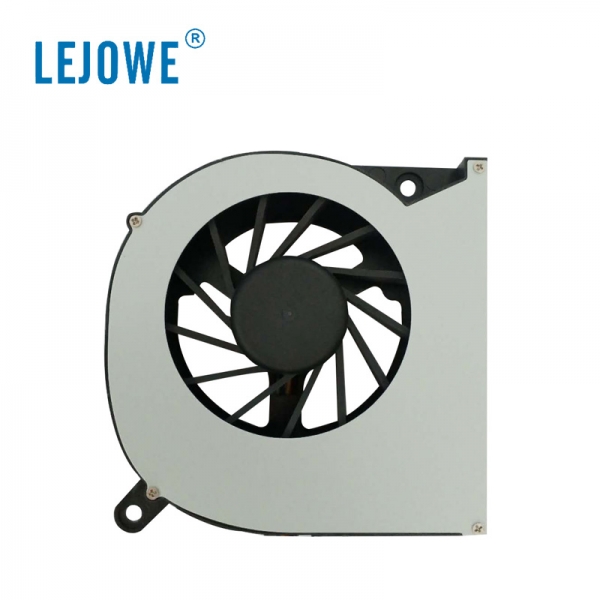PRODUCT DISPLAY
CONTANT US
Shenzhen Lejowe Electronic Technology Co., Ltd.
Contact: Mr. Peter
Cel: +86 135 1096 9898
Tel: +86 0755-23088869
Fax: +86 0755-23088819
E-mail: [email protected]
Add: 2/F, Building B, Heshengjia Industrial Park of Longhua New District, Shenzhen City, China.

Air volume
Air volume refers to the total volume of air discharged or incorporated by a cooling fan every minute. If calculated in cubic feet, the unit of air volume is CFM; if calculated in cubic meters, it is CMM. CFM (about 0.028 cubic meters per minute) is the most commonly used unit of air volume for heat dissipation fans.
Air volume is the most important index to measure the heat dissipation capacity of heat dissipation fans. Obviously, the larger the air volume, the higher the heat dissipation capacity of the cooling fan. This is because the heat capacity ratio of air is certain, larger air volume, that is, more air can take more heat per unit time. Of course, under the same air volume, the heat dissipation effect is related to the flow mode of the wind.
wind pressure
Wind pressure and air volume are two relative concepts. Generally speaking, considering the cost savings of the manufacturer, it is necessary to sacrifice some air pressure in order to design the fan with large volume. If the fan can drive a large amount of air flow, but the wind pressure is small, the wind will not blow to the bottom of the radiator (which is why some fans have a high speed and a large amount of air, but the heat dissipation effect is not good). On the contrary, the high wind pressure often means that the air volume is small, and there is not enough cold air to heat the radiator. In other words, it will cause bad heat dissipation.
Fan speed
The fan speed refers to the number of rotations per minute of the fan blade in rpm. The fan speed is determined by the number of turns in the coil, the working voltage, the number of fan blades, the inclination, the height, the diameter and the bearing system. There is no necessary relationship between speed and fan quality. The speed of the fan can be measured either by internal speed signal or by external speed signal.
With the change of application and environment temperature, different speed fans are sometimes needed to meet the demand. Some manufacturers specially designed heat dissipation fans that can adjust the speed of fans. They are manual and automatic. Manual is mainly to allow users to use low speed in winter to achieve low noise, high speed in summer to achieve good heat dissipation effect. The automatic temperature-regulating radiator usually has a temperature-controlled inductor, which can automatically control the speed of the fan according to the current working temperature. The higher the temperature, the higher the speed, and the lower the temperature, the lower the speed, so as to achieve a dynamic balance, so as to keep the best combination of wind noise and heat dissipation effect.
Fan noise
In addition to the heat dissipation effect, the working noise of fans is also a common concern. Fan noise is the size of noise generated by the fan when it works. It is influenced by many factors, in decibels (dB). The measurement of fan noise needs to be carried out in a muffler with noise less than 17 dB, one meter away from the fan, and aligned with the fan's inlet along the direction of the fan's rotation axis. A-weighted method is used to measure the fan's inlet. The frequency spectrum characteristics of fan noise are also very important, so it is necessary to record the frequency distribution of fan noise with a spectrum analyzer. Generally, the noise of fan should be as small as possible, and there can be no abnormal sound.
Fan noise is related to friction and air flow. The higher the speed of the fan and the larger the volume of the fan, the greater the noise will be. In addition, the vibration of the fan itself is also a factor that can not be ignored. Of course, the self-vibration of high-quality fans will be very small, but the first two are difficult to overcome. To solve this problem, we can try to use larger fans. In the case of the same air flow, the working noise of large fan at lower speed is less than that of small fan at higher speed. Another factor that we tend to overlook is the bearing of the fan. Because of friction and collision between shaft and bearing when fan rotates at high speed, it is also a main source of fan noise.
Shenzhen Lejowe Electronic Technology Co., Ltd.
Contact: Mr. Peter
Cel: +86 135 1096 9898
Tel: +86 0755-23088869
Fax: +86 0755-23088819
E-mail: [email protected]
Add: 2/F, Building B, Heshengjia Industrial Park of Longhua New District, Shenzhen City, China.
Copyright@2020 Shenzhen Lejowe Electronic Technology Co., Ltd. Contact: Mr.Huang Mob: +86 135 1096 9898
Location: 2/F, Building B, Heshengjia Industrial Park of Longhua New District, Shenzhen City, China. Online Hours: 9:00AM ~18:00PM,GMT+8(Monday ~ Friday)